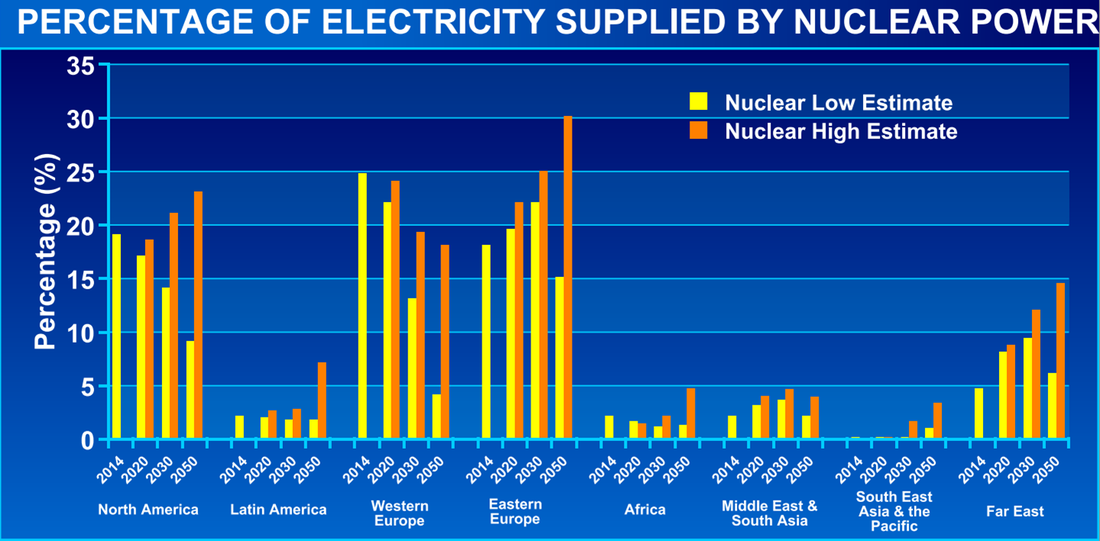When I was graduating from the Nuclear Engineering department at Purdue in 2008-2009, the outlook for nuclear energy was great, so great that we called it the "Nuclear Renaissance." My classmates and I were getting job offers left and right from the nuclear industry, despite the financial crisis. Nuclear energy was predicted to rise 50% in the US and countless countries around the world were considering introducing nuclear to the energy mix.
Then, Fukushima happened and all plans were put on hold while the ramifications of the accident were analyzed. While the social impact on the local community is irreversible and the clean up will be difficult, many countries have since realized that nuclear energy is necessary for producing clean and reliable electricity and that the risks for accidents can be mitigated with lessons learned and investing in new technology.
The International Atomic Energy Agency (IAEA) predicts that the percentage of electricity supplied by nuclear energy will grow in total worldwide, both in the low and high estimate. However, growth (or decline) does vary by region (see graph below). The largest growth is in Asia, countries like China, India, and South Korea are investing heavily in nuclear energy and several other Asian and Pacific countries are currently building the infrastructure to introduce nuclear energy.
The final agreement from COP21 was not technology-specific, which means that all low-carbon technologies, including nuclear, can be used to mitigate climate change. This is a big signal to the world, because it means that we should stop favoring one technology over another and start using all available solutions where they are appropriate. Jeremy Gordon of the World Nuclear Association said it perfectly:
"The world needs more positive solutions, more fixing of problems where they exist. It needs less arguing, less favouritism, less blocking."


 RSS Feed
RSS Feed

